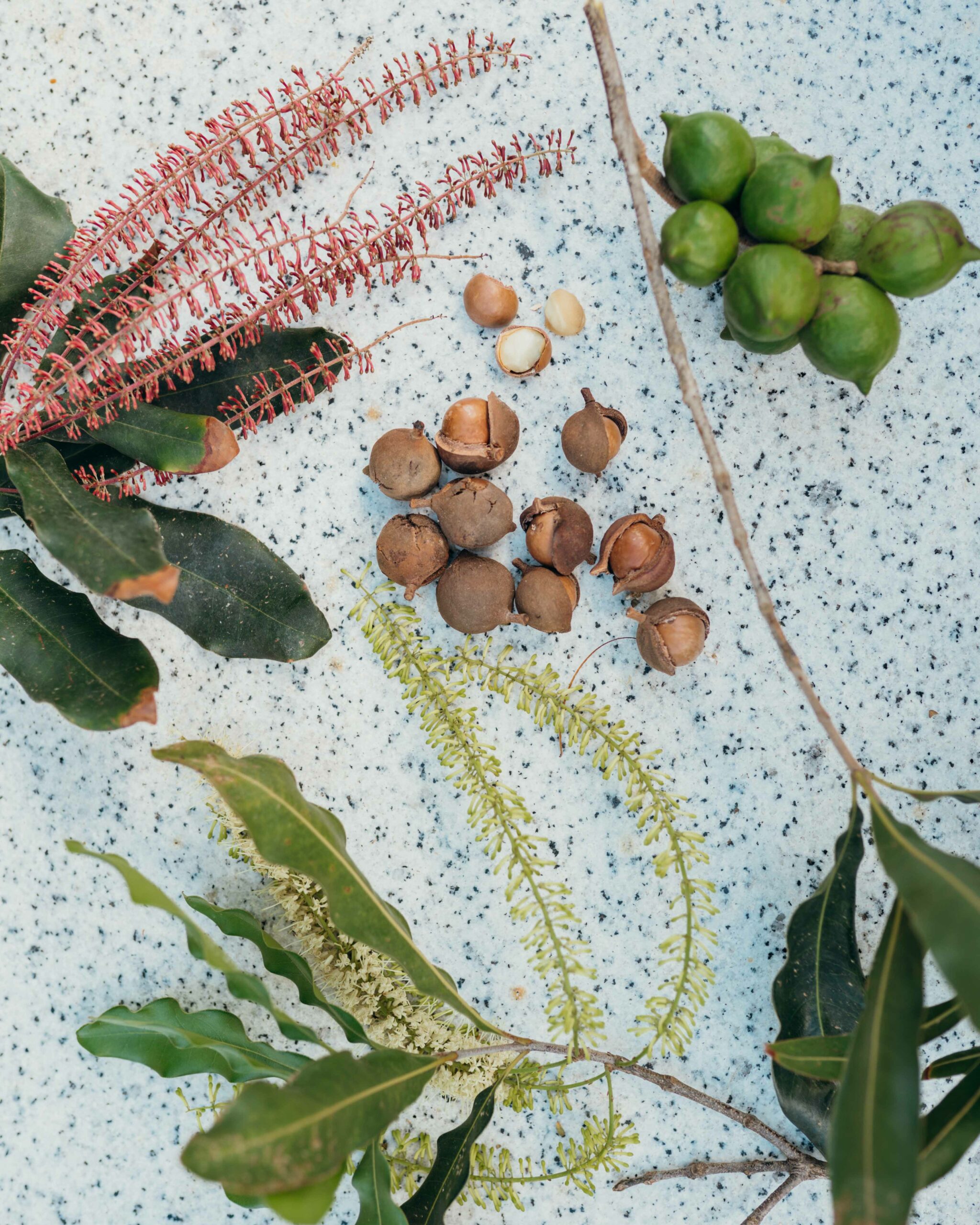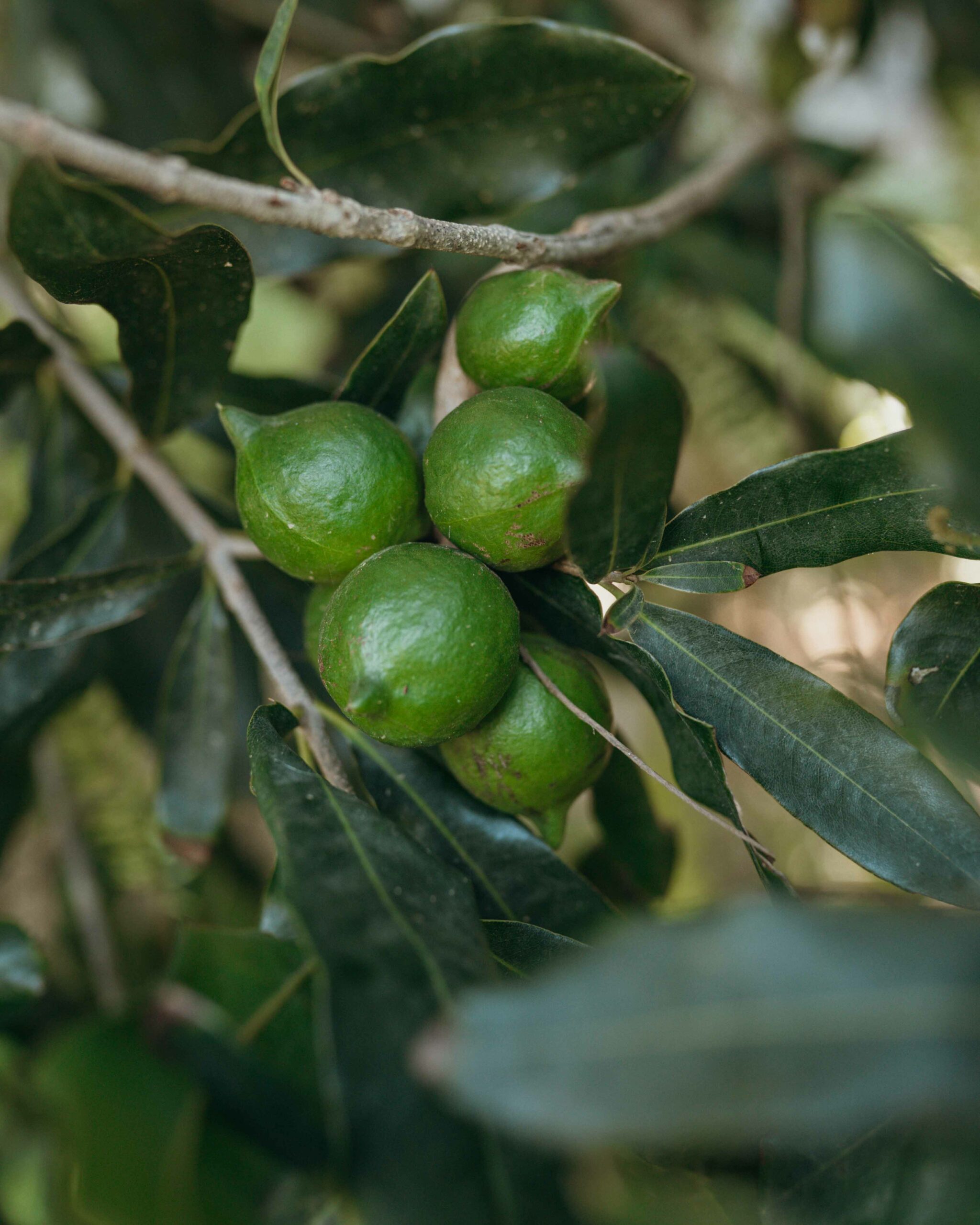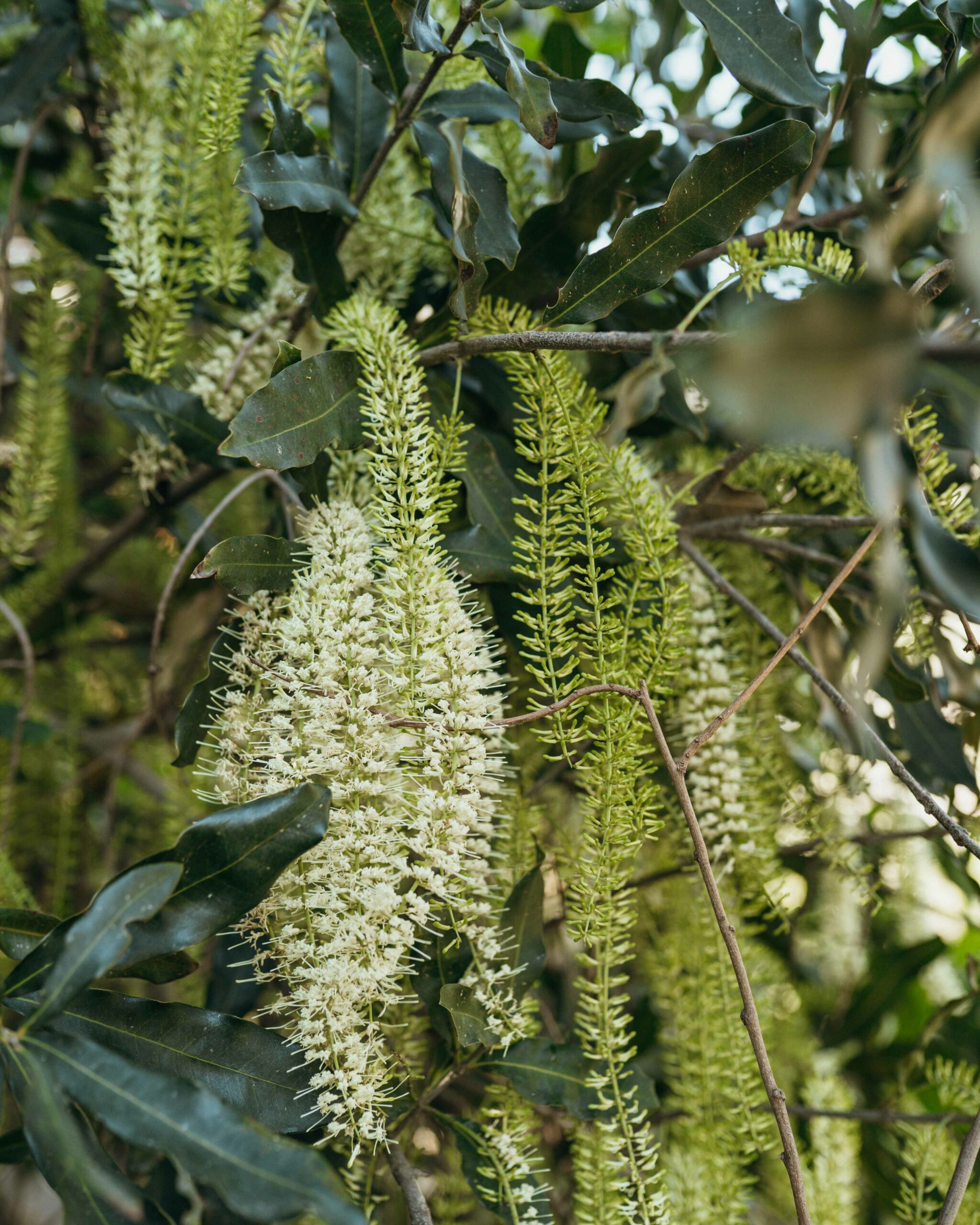Macadamia integrifolia
MACADAMIA
Englische Bezeichnung: Macadamia
Spanische Bezeichnung: Macadamia
Familie
Silberbaumgewächse (Proteaceae)
Verwendbare Teile:
Frucht, Schale, Blüten & Blätter
Hauptbestandteile:
Mineralstoffe: Magnesium, Kalium, Zink
Vitamine: B-Vitamine, E
Ernte-Hinweise:
Es dauert nur etwa sechs Monate, bis die Nüsse zu Boden fallen. Dann können diese aufgesammelt und anschließend optimalerweise bei 32 bis 50 Grad und 1,5%iger Feuchtigkeit getrocknet werden, bevor sie anschließend geknackt werden können.
Verwendung:
Gebäck, Müslis, Currys, Desserts, Füllungen, Cremes, veganer Käse
Die köstlich-knackigen Früchte des Macadamia-Baums stammen ursprünglich aus den Regenwäldern Australiens, wo schon die Ureinwohner sie als besonders nahrhaft schätzten und sie „Kindal Kindal“ nannten.
Die weichen, cremefarbenen Kerne von Macadamia-Nüssen schmecken leicht süßlich, intensiv nussig und haben ein feines, butterartiges Aroma.
Der konventionelle Anbau bzw. vor allem die Ernte/Verarbeitung ist sehr aufwändig, was die „Königin der Nüsse“ im Handel zur teuersten Nuss der Welt macht.
Family
Silver tree family (Proteaceae)
Usable parts:
Fruit, peel, flowers & leaves
Main components:
Minerals: magnesium, potassium, zinc
Vitamins: B vitamins, E
Harvesting guideline:
It only takes around six months for the nuts to fall to the ground. They can then be collected and dried, ideally at 32 to 50 degrees and 1.5% humidity, before they can be cracked.
Use:
Pastries, mueslis, curries, desserts, fillings, creams, vegan cheese
The deliciously crunchy fruits of the macadamia tree originally come from the rainforests of Australia, where the indigenous people valued them as particularly nutritious and called them „Kindal Kindal“.
The soft, cream-coloured kernels of macadamia nuts taste slightly sweet, intensely nutty and have a fine, buttery aroma.
Conventional cultivation and, above all, harvesting/processing is very costly, which makes the „queen of nuts“ the most expensive nut in the world.
Familia
Familia del árbol plateado (Proteaceae)
Partes utilizables:
Frutas, cáscaras, flores y hojas
Componentes principales:
Minerales: magnesio, potasio, zinc
Vitaminas: Vitaminas B, E
Guía de cosecha:
Las nueces sólo tardan unos seis meses en caer al suelo. A continuación, pueden recogerse y secarse, idealmente a 32-50 grados y 1,5% de humedad, antes de partirlas.
Uso:
Pastelería, mueslis, curry, postres, rellenos, cremas, queso vegano
Los deliciosos y crujientes frutos del árbol de la macadamia proceden originariamente de las selvas tropicales de Australia, donde los indígenas los valoraban como especialmente nutritivos y los llamaban „Kindal Kindal“.
Los granos blandos y de color crema de las nueces de macadamia tienen un sabor ligeramente dulce, intensamente a nuez y un fino aroma mantecoso.
El cultivo convencional y, sobre todo, la recolección y el procesamiento son muy costosos, lo que convierte a la „reina de las nueces“ en el fruto seco más caro del mundo.









































